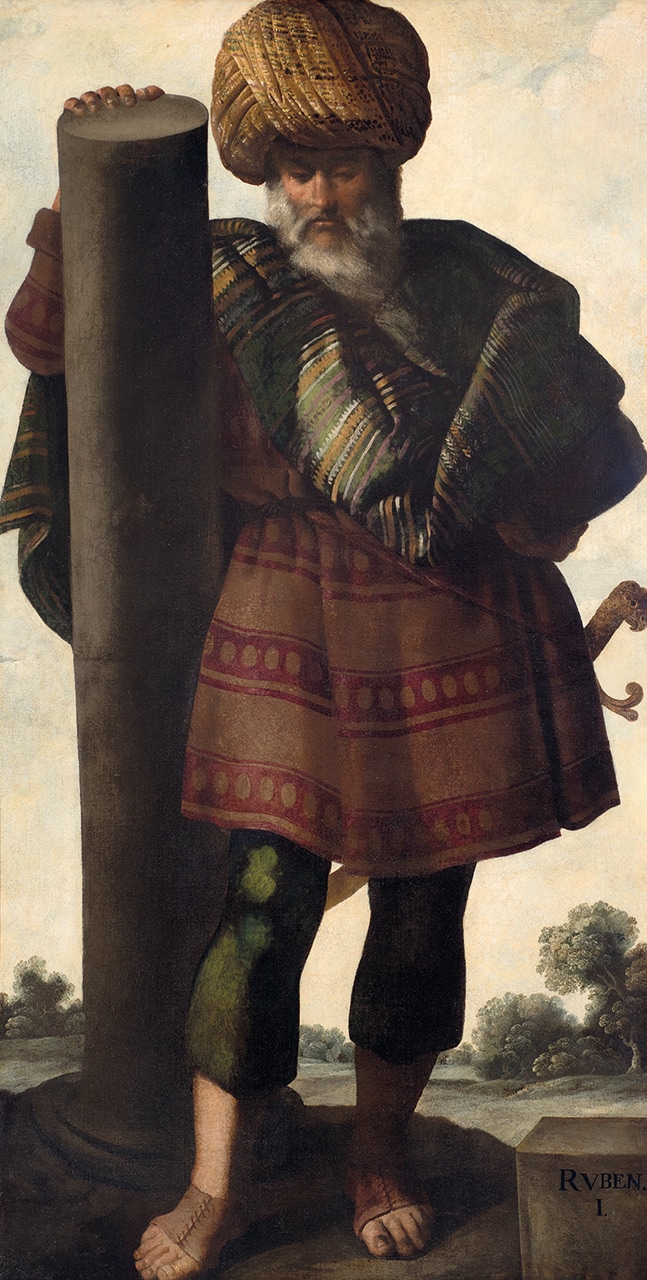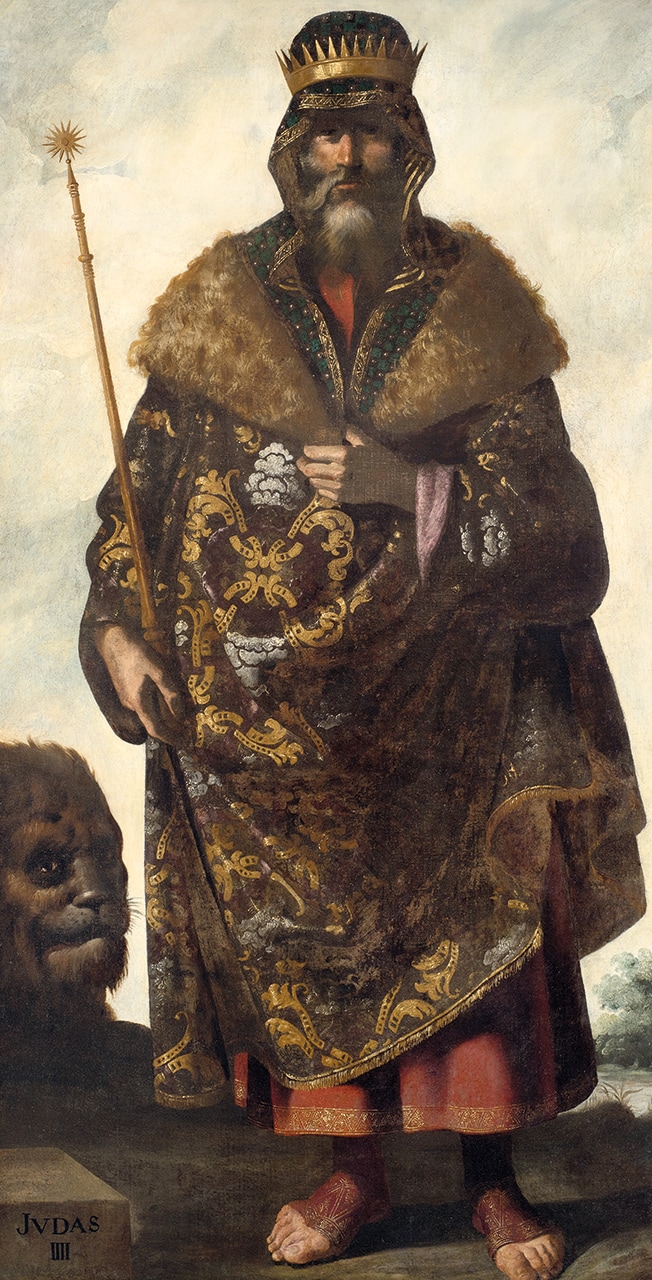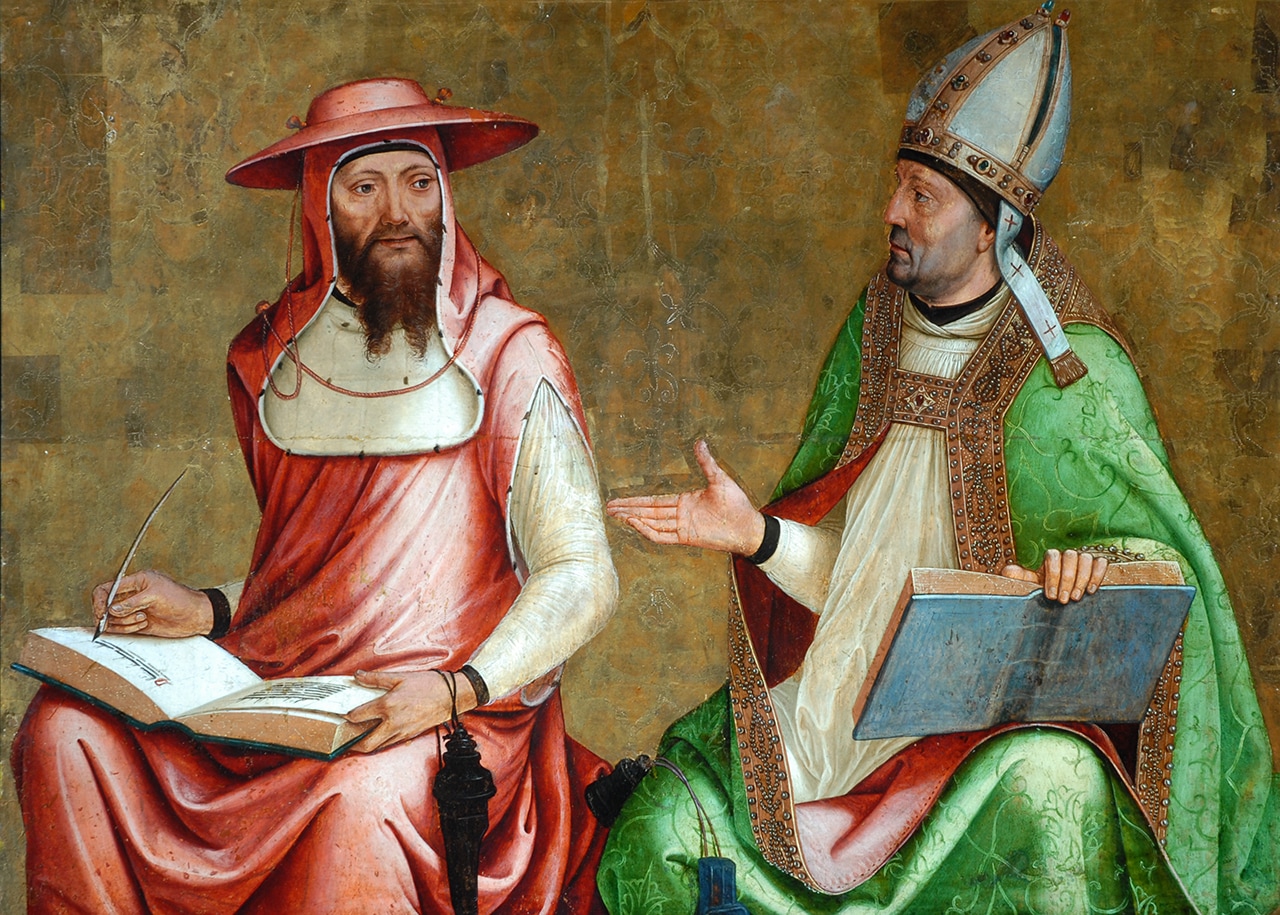
Power
and Authority
Explore images of status and power in Habsburg Spain.
Art was instrumental in fashioning an official image of majesty for the Spanish Habsburgs, who were the most powerful monarchs in the early modern period, ruling over vast territories in Europe, the Americas, and the Philippines.
They believed that they were appointed by God to rule and defend the Catholic Faith. In portraiture, the traditional royal attributes of sceptre and crown, common in other European contexts, are typically absent. Instead, royal authority is expressed through the naturalistic depiction of physiognomy and the direct, inscrutable gaze of the sitters, which gives them a superior and remote air. Male royals wear the insignia of the Order of the Golden Fleece, the quintessential identifier of the Habsburg dynasty.
As manifestations of soft power, royal portraits were displayed at court to remind visitors and courtiers of their might, but they also circulated in colonial territories, and were sent to other European courts in order to negotiate marriages and powerful alliances. In the devotional context, portraiture served as an effective vehicle for showing how eminent religious figures looked: biblical characters, popes, cardinals, nuns, monks, and saints. Artists either depicted their likeness in the form of a portrait or showed them in action in a narrative scene.
Whether working with secular or religious figures, what mattered most to the artists and their audiences was the concept of a ‘true likeness’. This did not simply constitute a descriptive image of a person but instead represented a powerful stand-in for the sacred or royal sitter, inspiring awe and devotion.
King Philip II of Spain
Workshop of Anthonis Mor, 1560–70.
The Spanish Gallery, Bishop Auckland.
The portrait of King Philip II of Spain commemorates his victory over the French at the Battle of Saint Quentin on 10 August 1557. Dressed as a warrior king, he carries a baton of command in his left hand while resting his right on the pommel of his sword. He wears the pendant of the Order of the Golden Fleece, the emblem of the Habsburgs. On his chest, his armour is decorated with an image of the Virgin Mary, alluding to his role as a champion of the Catholic faith.
The Infanta Isabel Clara Eugenia, Governess of the Netherlands
Possibly after Juan Pantoja de la Cruz, c. 1650.
The Bowes Museum, Barnard Castle, B.M.69.
The Infanta Isabel Clara Eugenia (1566–1633) was Archduchess of the Spanish Netherlands and a great patron of the arts. In this portrait, one of the many versions after Pantoja’s original, she is depicted in a dress embroidered with flowers that have various symbolic connotations. The jewellery is also meaningful, since the cross pendant made of pearls and precious stones identifies her as a Catholic ruler.
Portrait of Philip IV
Unknown artist, after Diego Rodríguez de Silva y Velázquez, Nineteenth century.
The Bowes Museum, Barnard Castle, B.M.69.
Diego Velázquez was greatly admired by nineteenth-century artists for his free brushwork and naturalistic portraits of the royal Habsburgs and their courtiers. It was common for artists to copy his paintings in the Prado Museum. This bust portrait is inspired by Velázquez’s portrait of King Philip IV of Spain, produced in around 1653 (Prado Museum). Although the King is stripped of symbolic references to identity, viewers would have recognized his distinctive facial features. Disseminated through painted copies and engravings, this portrait became the official image of the King toward the end of his reign, which lasted from 1621 to 1665.
Mariana of Austria, Queen of Spain
Claudio Coello, c. 1677–80.
The Bowes Museum, Barnard Castle, B.M.69.
Mariana of Austria (1634–96) was the niece and second wife of Philip IV and mother of Charles II. After Philip IV’s death in 1665, Mariana ruled as Queen Regent for her son Charles II (1662–1700). In this half-length portrait, she is depicted as a royal widow and set against blue and gold drapery in the characteristic manner of Claudio Coello. As she looks at the viewer, she rests her arm on an empty chair, alluding to her powers as Regent until the coming of age of her son.
Charles II, King of Spain (1661–1700)
After Juan Carreño de Miranda, Late eighteenth century.
The Bowes Museum, Barnard Castle, B.M.69.
Charles II (1661–1700) ascended to the Spanish throne when he was still a child. He appears in this painting in ceremonial dress, with the insignia of the Order of the Golden Fleece, which identifies him as a Habsburg monarch, on a chain around his neck. Two pages hold up his ermine-trimmed cloak, while the royal crown and sceptre, which serve equally as symbols of royal authority, lie on the cushion on the table on the right. As the King gazes outwards towards the viewer, he rests his hand on an orb, a symbol of worldly dominion.
Judah
Francisco de Zurbarán, c. 1640–45.
Auckland Castle, Bishop Auckland.
Reuben and Judah are biblical figures and two of Jacob’s twelve sons. Zurbarán depicts the former with his right hand resting on a column, a symbol of fortitude, reflecting his power and rank as Jacob’s firstborn son. Yet Reuben’s eyes are downcast, alluding to the betrayal of his father’s trust and the subsequent decline of his Tribe. In contrast, Jacob’s fourth son, Judah, is depicted in the rich trappings of a king in recognition of his role as the ancestor of Joseph, the earthly father of Jesus, as well as of Kings David and Solomon.
Read the in-depth commentaryReuben
Francisco de Zurbarán, c. 1640–45.
Auckland Castle, Bishop Auckland.
St Jerome and St Ambrose
Juan de Borgoña, c. 1510.
The Bowes Museum, Barnard Castle, B.M.69.
In these two panels, which were once part of an altarpiece, Juan de Borgoña offers portraits of the Four Doctors of the Western Church: St Gregory, St Augustine, St Jerome, and St Ambrose. In the first, St Gregory—identified by his papal tiara—gazes outwards towards St Augustine, who appears absorbed in his writing. In the second, St Jerome, who wears the distinctive red robes of a cardinal, listens patiently as St Ambrose, who wears those of a bishop, engages him in discussion. In each instance, the intricately tooled-gold background establishes an atmosphere of celestial serenity.
Read the in-depth commentarySt Gregory and St Augustine
Juan de Borgoña, c. 1510.
The Bowes Museum, Barnard Castle, B.M.69.
The Virgin of Mercy
Pedro Muñoz , c. 1640–50.
The Bowes Museum, Barnard Castle, B.M.69.
Two angels hold open the Virgin Mary’s large mantle, as if having pulled back a curtain on a stage to reveal a group of men kneeling in prayer and adoration. They include a pope, a cardinal, two kings, and a number of monks and prelates. Their identities are probably linked to the badge visible on the Virgin’s chest, which is the insignia of the Mercedarian Order, founded in the thirteenth century to ransom Christians held captive in Islamic Spain and North Africa.
The Battle of Clavijo
Anonymous Spanish Artist, c. 1600–50.
The Spanish Gallery, Bishop Auckland.
The Apostle, St James the Greater, is depicted as a powerful Christian warrior on a white horse, wielding a sword while trampling over vanquished Muslim soldiers. In his left hand he holds a banner displaying the emblem of the Order of Santiago. The image is based on the fabricated story of the Battle of Clavijo, at which the saint rallied to the aid of the King of Asturias to defeat the forces of the Umayyad Caliphate of Cordoba.
The ‘Copatronazgo’ of Saint James the Greater and Saint Teresa of Ávila
Fray Juan Bautista Maíno, c. 1627.
The Spanish Gallery, Bishop Auckland.
Maíno’s composition reflects the desire of the Spanish Crown to make St Teresa of Ávila (1515–82) the co-patron of Spain alongside St James the Greater, who had already been adopted. Teresa, a Discalced Carmelite nun and reformer, holds a pen and a book, representing the mystical writings that were the source of her fame and influence, while James brandishes a sword, recalling his assistance in the Reconquest. Between them, cherubs hold up the arms of Castile and Leon, while a dove, a symbol of the Holy Spirit, offers divine support for the enterprise.











